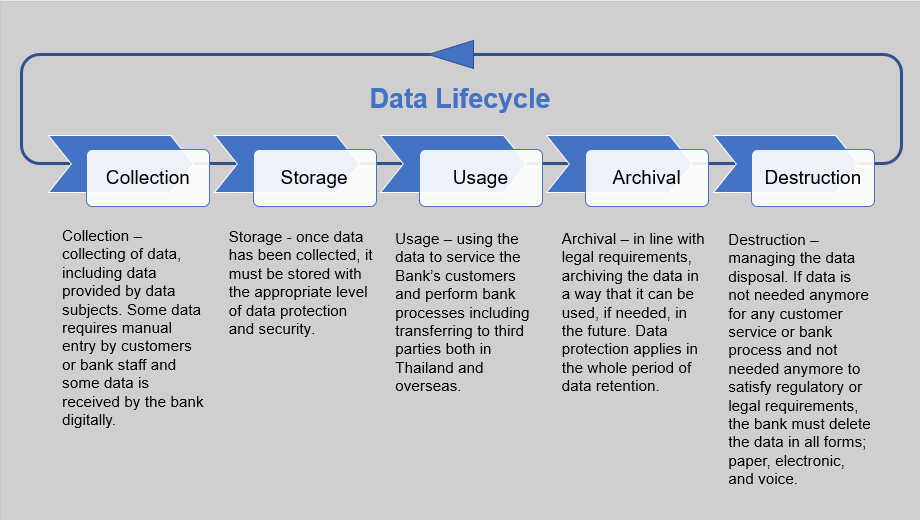The Influence of Effective Data Destruction on Cyber Security Risk Administration
The Influence of Effective Data Destruction on Cyber Security Risk Administration
Blog Article
The Value of Effective Information Damage Practices in Safeguarding Sensitive Information and Ensuring Computer System Safety And Security
In a period where information breaches are increasingly typical, the value of effective information devastation methods can not be overstated. Executing robust information destruction techniques not just minimizes these dangers however additionally straightens with lawful conformity requirements, ensuring that organizations copyright their online reputation and foster customer trust.
Comprehending Data Destruction
Recognizing information damage is vital in today's electronic landscape, where sensitive information can quickly be compromised. Efficient information damage entails not just making sure but removing documents that data is irretrievable through thorough methods. This process is important for organizations that take care of personal client details, copyright, or inner records, as any type of breach can lead to severe financial and reputational repercussions.
Data damage includes various methods, including shredding physical media, degaussing magnetic storage gadgets, and using software-based options that overwrite data several times. Each approach offers a particular function and must line up with the sensitivity of the details being gotten rid of. For instance, physical destruction is frequently favored for hard disks consisting of extremely confidential data, while software methods may be enough for much less sensitive details.
Furthermore, sticking to sector criteria and laws, such as the General Information Security Guideline (GDPR) or the Medical Insurance Portability and Accountability Act (HIPAA), is vital for compliance and to mitigate lawful dangers. Organizations needs to develop a durable information damage policy, train employees on ideal techniques, and routinely audit their procedures to make sure that all sensitive information is gotten rid of firmly and efficiently.
Risks of Inadequate Practices
Inadequate data destruction methods subject companies to considerable dangers that can have far-ranging repercussions. When sensitive information is not properly taken care of, it remains at risk to unauthorized gain access to, which can lead to data violations and identity theft. Such incidents not just compromise the safety and security of individuals yet likewise taint the company's online reputation, causing a loss of consumer count on and possible economic consequences.
Moreover, regulative compliance is significantly stringent in lots of sectors. Failure to follow information destruction guidelines can result in hefty fines and lawsuits against organizations. These fines can stress financial sources and divert interest from core service operations.
Furthermore, the abuse of recurring information can result in copyright burglary or corporate espionage, endangering competitive advantages (data destruction). The effect of insufficient data destruction expands beyond prompt financial losses; it can likewise result in lasting damages to brand stability and market position

Organizations have to identify that data protection is not solely concerning avoiding breaches; it also includes the accountable monitoring of information throughout its lifecycle. Disregarding efficient information devastation protocols can have catastrophic effects, emphasizing the requirement for durable measures to minimize these dangers.
Finest Practices for Data Destruction
Carrying out reliable information devastation practices is essential for protecting delicate details and keeping compliance with governing requirements. Organizations needs to embrace a multi-faceted technique to ensure that information is irretrievable, consequently avoiding unauthorized accessibility and possible breaches.
First, information should be categorized based on level of sensitivity, allowing organizations to apply suitable destruction techniques tailored to the level of risk. For electronic data, using software-based data-wiping devices that adhere to industry requirements can effectively overwrite existing data. Physical damage approaches, such as shredding or degaussing, are important for devices that store delicate info, making sure full eradication.
Establishing a clear information retention policy is essential, outlining how much time various sorts Extra resources of info must be preserved before damage. Routine audits of information storage systems are additionally needed to identify unneeded or outdated information needing elimination.
In addition, training employees on the importance of information destruction and the particular procedures to adhere to fosters a culture of safety within the company. Maintaining documentation of information destruction refines gives accountability and sustains conformity with external regulations and internal plans. By sticking to these best practices, companies can considerably reduce the threats associated with data direct exposure.
Legal and Compliance Considerations

Failing to adhere to these policies can result in severe penalties, consisting of considerable penalties and reputational damage. Organizations should implement a durable information damage policy that lines up with these legal structures and supplies clear guidelines on the correct techniques of data disposal, whether physical shredding or digital wiping.
In addition, preserving documentation of data destruction activities is necessary for showing conformity during audits or evaluations. By focusing on lawful and compliance considerations, organizations can enhance their find here data safety position and foster trust with customers and stakeholders, eventually adding to an extra safe data administration setting.
Benefits of Effective Data Devastation
Reliable data destruction techniques expand past simple conformity; they use considerable benefits to organizations that prioritize them. By making sure that delicate details is irretrievably ruined, companies minimize the threat of information breaches and the prospective financial consequences related to them. This positive method not just safeguards against unauthorized accessibility however additionally boosts the overall trustworthiness of the organization in the eyes of clients and stakeholders.
Carrying out durable information damage techniques, such as physical damage of storage tools or advanced information cleaning techniques, adds to the conditioning of an organization's cybersecurity stance. data destruction. It lowers the likelihood of intellectual residential or commercial property burglary and shields proprietary details, therefore keeping an affordable edge on the market

Conclusion
In final thought, reliable information destruction techniques are crucial for guarding sensitive information and enhancing total computer security. Ultimately, a commitment to durable information devastation strategies cultivates a society of duty, thereby strengthening an organization's cybersecurity posture and keeping customer count on.

Report this page